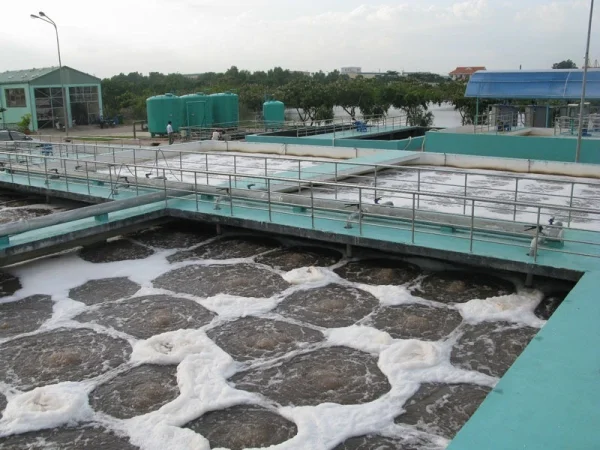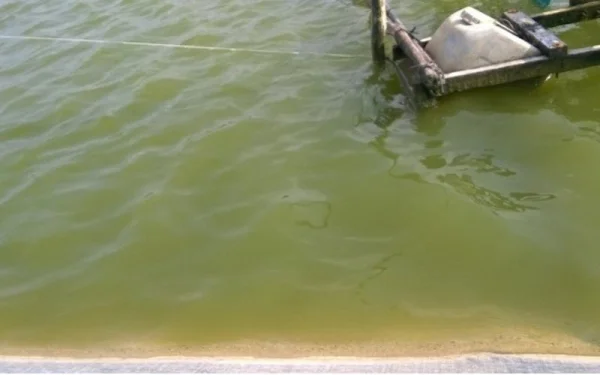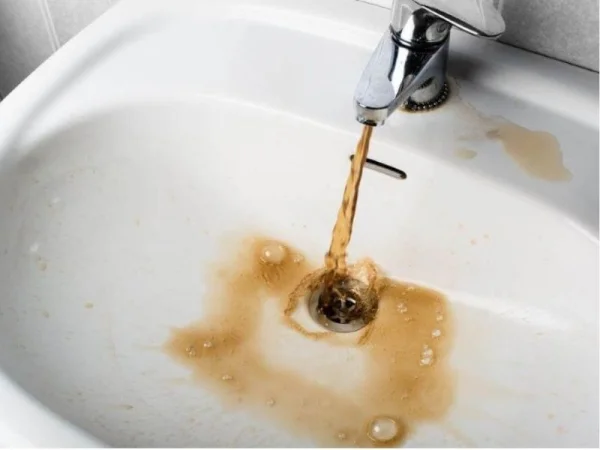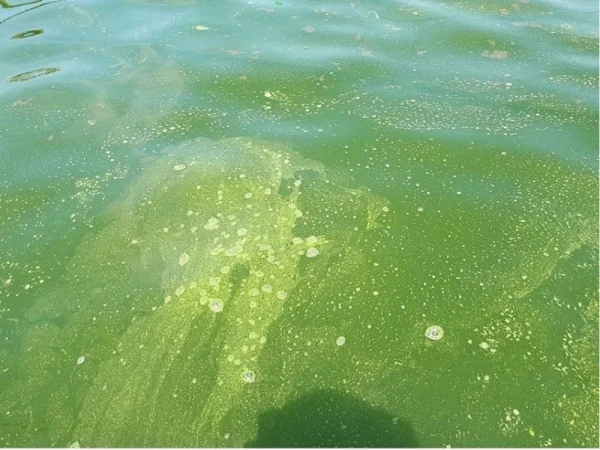
High-tech intensive and super-intensive shrimp farming models on canvas-lined ponds give extremely high harvest efficiency. However, during the use process, the pond lined with tarpaulins becomes covered with slime, moss, or gerbera and water fungus, which are harmful to shrimp. Let's join Dong A to find out the cause and how to quickly treat slimy shrimp pond water right below.
1. What are the reasons for slimy shrimp pond water?
In fact, there are many causes of slimy pond, but they mainly focus on the following issues:
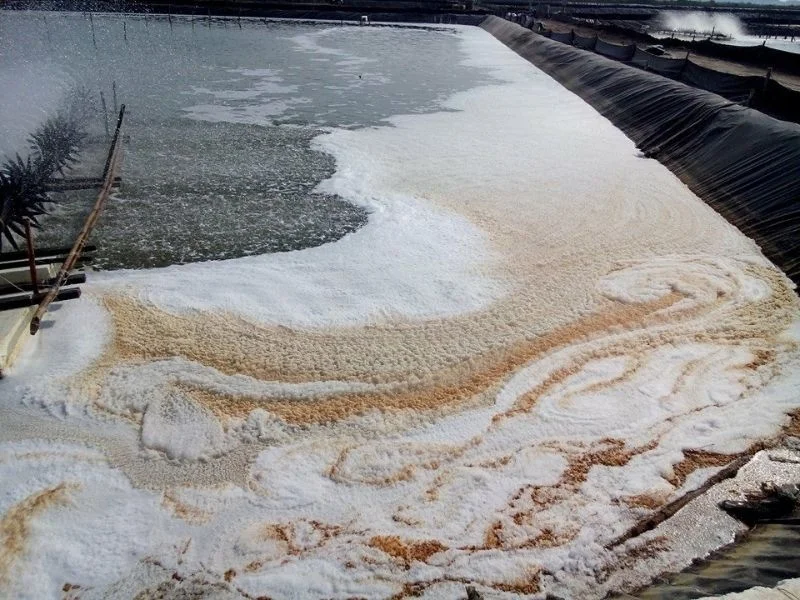
Shrimp pond water becomes viscous due to many different reasons
Due to excess shrimp food
Feeding is one of the most important stages in the aquaculture process in general, and shrimp farming in particular. In different conditions or stages of farming, shrimp will have different feeding quantities and regimes.
If farmers manage shrimp feeding ineffectively and have an excess amount, it will pollute the water source and create toxic gas. After a period of time, the amount of toxic gas in the pond increases, depending on the level of pollution, forming slime and moss.
The density of algae in the pond is high
In normal shrimp ponds, 5 main algae phyla will appear and are divided into 2 groups. Group 1 is beneficial algae, does not contain toxins and rarely causes blooming phenomena such as green algaes and diatoms. Meanwhile, group 2 will include algaes that are harmful to shrimp, often causing bloomy, muddy and containing many toxins such as dinoflagellates, blue-green algae, and euglenaphytes.
But when controlling algae density in ponds is not really strict, it causes unnecessary consequences. Whether it is beneficial or harmful algae, it will bloom (algae break-down) and that is also the main cause of slime and water accumulation inside the pond.
Abuse of molasses
Molasses is inherently concentrated molasses during the process of making sand, has high nutritional content to provide algae and microorganisms,... However, molasses contains quite a lot of harmful bacteria and fungi that cause harmful to ponds. When overused, it causes a "green algae" status, where bacteria increase rapidly, causing the shrimp pond water to become slimy at the bottom of the tarpaulin.
The best way to treat slimy shrimp pond water is to brew it with probiotics or change molasses with other types of sugar such as granulated sugar, liquid sugar,... In addition, people should also use probiotic strains to treat tarpaulin slime directly, without needing brew to shorten time and save costs.
Use of chemicals
When using chemicals with filtering effects such as PAC, potassium permanganate KMnO4 or metal EDTA,... In cases where it is not suitable for each treatment step or the chemical dosage is not flexible for each different water sources; or farmers use other chemicals such as lime, Zeolite, and Dolomite that are of low quality and contain many impurities, all of them cannot dissolve and then settle to the bottom of the pond, creating slime and moss.
2. The harmful effects of slimy shrimp ponds should be known
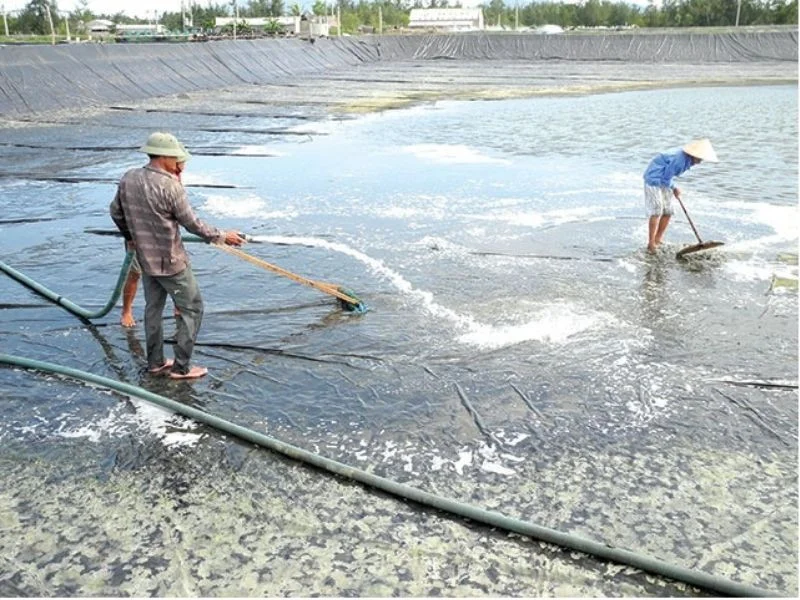
The harmful effects of shrimp ponds being slimy should be known
When slime appears in shrimp ponds, it causes a lot of danger, because this area is where harmful bacteria and fungi grow. Therefore, they cause a lot of harm to shrimp ponds if not being treated promptly. Specifically:
- A slimy pond is the residence of pathogens such as bacteria, fungi or protozoa. If eaten directly or exposed to this mucus, it can make shrimp more susceptible to intestinal diseases, causing many dangers.
- The presence of tarpaulin contributes to the formation of anaerobic conditions, produces toxic gas in the pond and is harmful to shrimp.
- Algae has the ability of growing more strongly because there is slime in the pond, disrupting the balance of pond water and possibly causing the oxygen source to be depleted.
- Not only that, slimy tarpaulin also causes a lot of difficulties for farmers, requiring increased costs to treat.
3. Instructions on how to effectively limit and treat slimy shrimp pond water
Viscous shrimp pond water often occurs in more tarpaulin pond areas, causing farmers lots of difficulties. Therefore, to limit this occurrence, you should learn some ways to prevent and treat slimy shrimp ponds shared below.
An effective way to prevent shrimp pond water from becoming slimy
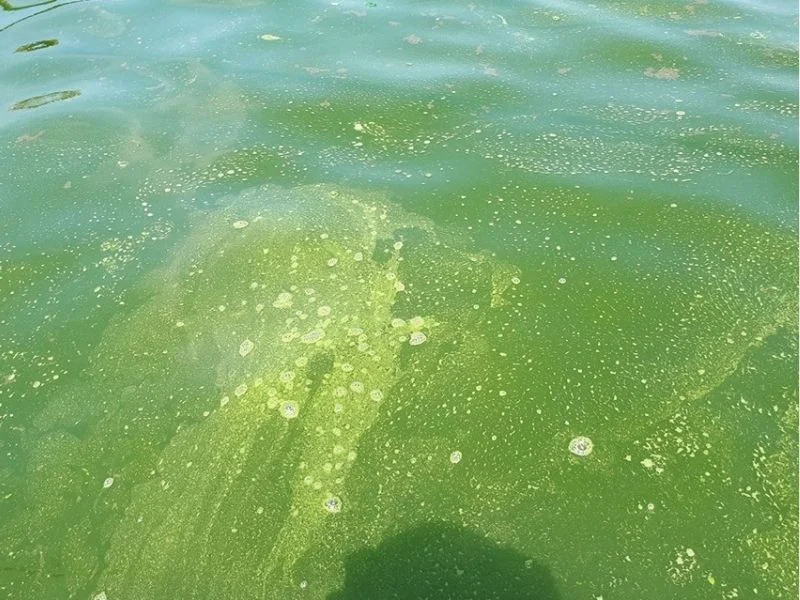
How to effectively prevent shrimp pond water from becoming viscous
Shrimp slime mainly appears due to the accumulation of waste during the farming process. In order to prevent this, you need to manage waste in the pond in the most effective way. At the same time, you must also pay attention to the following issues to limit the appearance of slime in your shrimp pond.
- Tarpaulin shrimp ponds need to be equipped with a filtration and sedimentation system to remove all waste when supplying water for shrimp farming. If necessary, you can use some water treatment chemicals to help settle organic matter that cannot be removed by the filtration system between farming cycles.
- A siphon system must be built at the bottom of the pond to collect all waste into the center of the pond. This way, it will be easier for you to periodically remove waste throughout the shrimp farming process.
- Before each farming season, the tarpaulin must be cleaned and scrubbed, ensuring there is no slime anymore.
- Choose good-quality food from a reputable unit, suitable for each age of farmed shrimp.
- Only release an appropriate amount of food for farmed shrimp to limit excess food in the pond.
- Use probiotics regularly to stabilize water quality in ponds.
Detailed instructions on how to treat slimy shrimp pond water
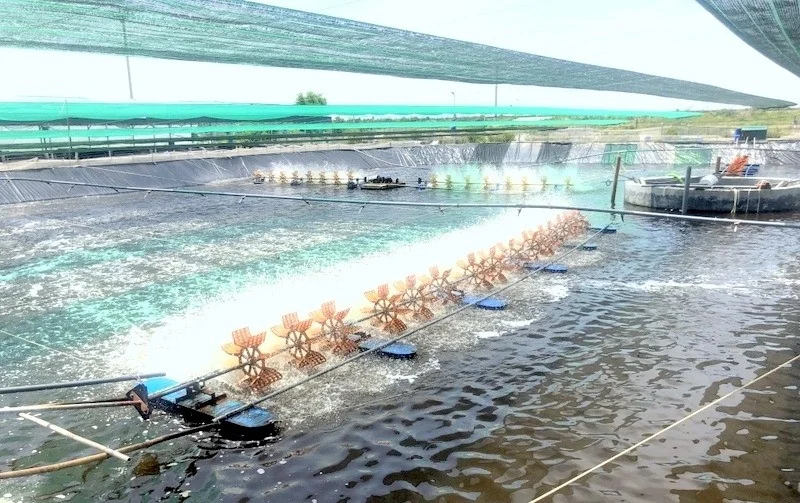
Detailed instructions on how to treat slimy shrimp pond water
Depending on the given situation, you can choose one of the following methods or combine them to treat slimy shrimp pond water.
- Using probiotics to reduce slimy tarpaulin is a popular option that many farmers choose because it is effective and does not cause loss of health.
- Maintain an appropriate water level in the pond ≥ 1.3m, ensuring that light cannot penetrate to the bottom.
- Clean off the slime when stocking new breeds or causing fake water color before stocking shrimp to avoid algae in the pond. Only when stocking shrimp for feeding, the color will be stable to limit floc break-down and cause of slime.
- Manage food sources strictly to limit excess, which causes algae to grow better.
- Increase fans and aeration at the bottom to increase dissolved oxygen and create more conditions for quickly releasing toxic gas from the pond environment. Periodically siphon the tarpaulin bottom.
With sharing about the causes, harmful effects, prevention and treatment of slimy shrimp pond water above, hopefully Dong A has helped you get more useful and necessary information if you encounter that situation. Remember to research carefully and refer to more articles on our website to find the most thorough way to treat water!
Contact Info:
- Hotline: (+84) 985797941
- Email: export@dongachem.vn
- Website: dongachem.com
- Address: Area 9, Phong Chau Town, Phu Ninh District, Phu Tho Province, Vietnam
Related Articles
Current Applications of PAC Chemical for Wastewater Treatment
During the industrial wastewater treatment process, people often use coagulation chemicals to remove ...
PAC Chemicals For Swimming Pool Water Treatment - Advantages And Treatment Process
PAC is a swimming pool water treatment compound commonly used and produced by many major countries ...
Chlorine Is Used To Treat Swimming Pool Water Effectively And Safely For Users
Chlorine is a common disinfectant used to maintain the cleanliness and safety of swimming pool ...
4 Measures to Treat Green Pond Water During Aquaculture
How to treat green pond water quickly and simply is something every aquaculture farmer wonders ...
What is alum-contaminated water? How to effectively treat alum-contaminated water?
A lum-contaminated water often occurs in rural areas, plains,... where wet rice is grown or there is ...
Highly Effective Method for Polluted Pond Water Treatment
Finding out the causes and having methods to treat polluted pond water will help shrimp and fish ...

